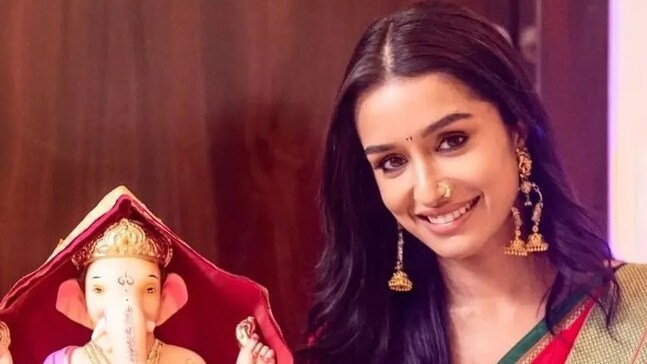- Home
- Fashion
The silk and zari pleats that encaptures the spirit of Maharashtra
How the Paithani saree became the symbol of Maharashtrian grace and uniform for Ganesh Chaturthi

The pitter-patter of loud rains, the sweet smell of freshly grated coconuts and jaggery and the sticks hitting the tough padding of drums; all let us know that Ganesh Chaturthi is here. Another sign symbolic of Bappa's return is our mothers and grandmothers removing their prized Paithani sarees from their wardrobes.
The silk weaves with zari work and intricate motifs create a timeless beauty that remains a favourite for the festive season. The pleats with a rich past, the paithani saree came into existence in the 2nd century BC during the Satavahana dynasty in Maharashtra. Originating in the city of Paithan on the banks of the Godavari River, these sarees, crafted with silk and gold or silver threads, were highly prized and became sought-after trade items. The saree's prominence surged during the Peshwa dynasty, whose royal patronage elevated its status and popularity.
And since then, the cherished sarees have remained a traditional luxe classic that has been meticulously preserved through generations. One of the weaves that has still kept the handloom industry in business, paithani sarees usually feature intricate floral and bird motifs and are adorned with gold zari work.
These sarees are made using the finest of silks, which are usually dyed in natural dyes such as halad, neel or red sandalwood. The intricate motifs that cover these nine yards of grace are hand-drawn on graph paper. Dyed silk threads are arranged on the loom to form the saree’s length before the threads are weft often with gold or silver threads, to create the delicate designs, before the saree is washed and polished for a lustrous finish.
Making a genuine Paithani saree might take months or even years, depending on the weaver's talent and level of complexity of the design and its motifs. About 500 grammes of silk and 250 grammes of zari threads are used to make a real Paithani saree.
With changing regions and historical periods, the variations of paithanis have also increased. There are many types of paithanis worn by women during the festive season, such as pure paithanis, gadwali paithanis, himroo paithanis, and more that encapsulate the spirit of the festive season well, thanks to the vibrant tones such as deep reds, lush greens, regal purples, and golden yellows, as well as the detailed design motifs on top.
Donning a Paithani on Ganesh Chaturthi isn't just aesthetic; it's a lineage of tradition. During this time most women drape a Nauvari Paithani, a nine-yard saree, complete with temple jewellery, jasmine gajra, nath, and a traditional bun—embodying the quintessential marathi mulgi.
Paithani’s grandeur and cultural resonance make it a perennial favourite during Ganesh Chaturthi. Whether you’re attending puja at home, lighting diyas during aarti, or hopping between pandals, wearing a Paithani becomes a personal rite of devotion.
Edited by Sabrina Mathews